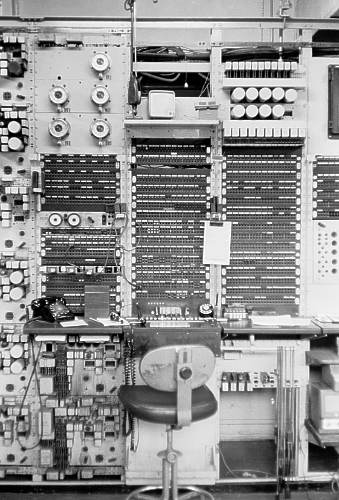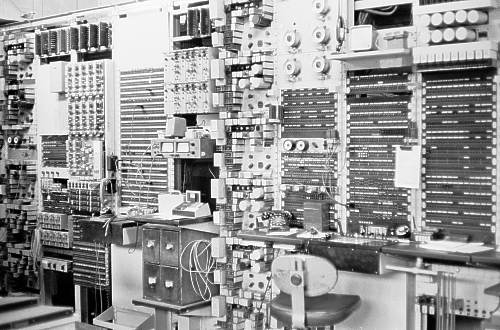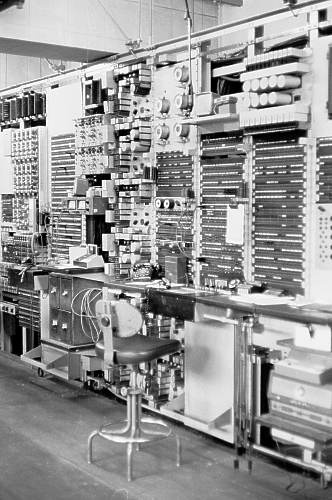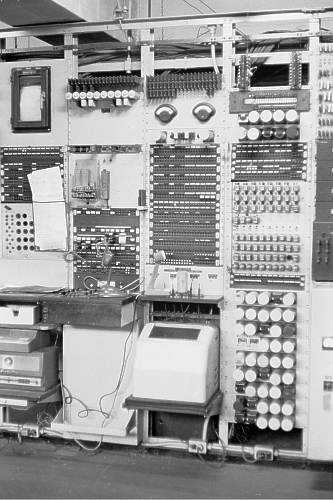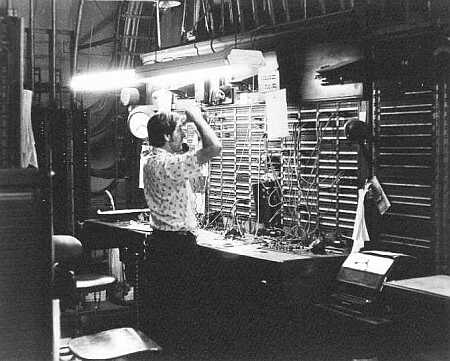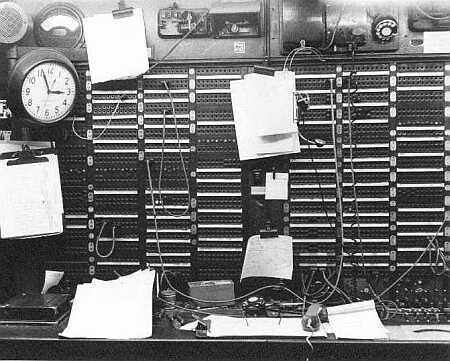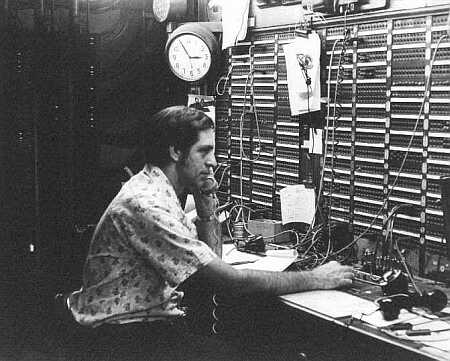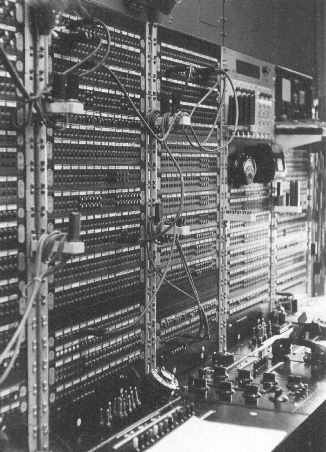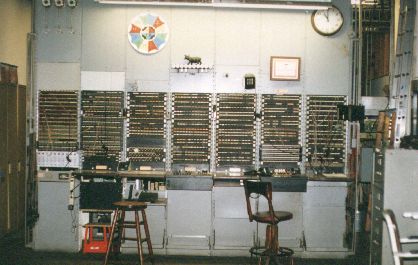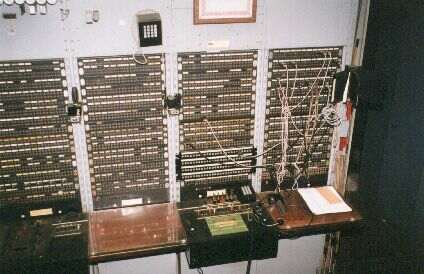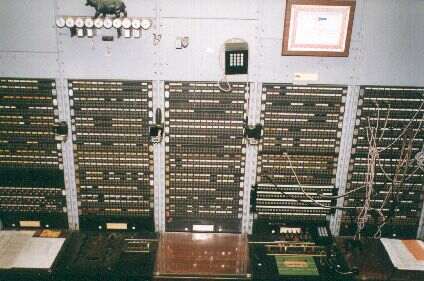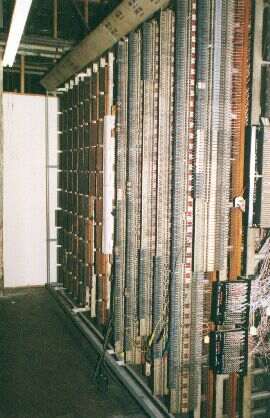THE PENNSYLVANIA RAILROAD
TELEPHONE AND TELEGRAPH DEPARTMENT PAGE
|
Few people think about the telephone and telegraph plant of the Pennsylvania Railroad yet it is actually one of the more unique aspects of the railroad and they were justly proud of it. The statistics listed in the March, 1955 issue of The Pennsy are impressive:
The Pennsy was very early in its investigation of the telephone for possible use on the railroad. In 1877, at the PRR's invitation, Thomas A. Watson, Bell's assistant, and Gardiner G. Hubbard, his financial backer, demonstrated the telephone to railroad officials in Altoona. In 1897, the South Fork branch became the first PRR line to dispatch its trains by phone. By 1920, the railroad was dispatched almost entirely by telephone. The equipment used was classic Western Electric and the facilities were built with the same care that AT&T built their own toll network. While extensive open wire plant lined the railroad west of Harrisburg, the electrified lines east of that city were all served with paper insulated lead cable. Where this cable was aerial, it was wrapped with steel tape to provide electromagnetic shielding from the electrification. East of Paoli to New York and Washington, the telephone plant was almost entirely underground in a railroad owned duct system. (The notable exception to this was the concrete pole line on the "High Line" between Kearny, New Jersey and the portals of the North River Tunnels.) On these facilities could be found train wires, block lines, message wires, power directors lines, teletype circuits, traction power and interlocking remote control and telemetry, PBX trunks and more. In 1955, between tower and station lines and wayside telephones, the railroad could boast one telephone in practically every mile of its 10,000 mile system. This vast communications plant was maintained and monitored from 19 test boards located throughout the system. The cash-starved condition of the Pennsylvania Railroad in its later years and its successor, the Penn Central, made it possible for some of these facilities to be seen in the late 1970's in almost the same condition as they would have been in 1955. After major reconstruction of both the Conrail and Amtrak portions of the ex-PRR lines in the early 1980's they are now gone, with the exception of "UD" office in Harrisburg. I became acquainted with this equipment rather late in its existence - during the Amtrak/Conrail era and thoroughly enjoyed the chance I had to work with it. As it was removed I was able to preserve a bit of "PO" test table in Philadelpha but so much more was lost. This can be seen in The Switchroom which is a sister to this site. I was also able to take a number of photographs of a few of the remaining test boards. Unless otherwise noted, the photographs are mine. I should have taken more! "PO" OFFICE, 30th STREET STATION, PHILADELPHIA, PA
PITTSBURGH, PA
"B" OFFICE, BALTIMORE, Maryland
"UD" OFFICE, HARRISBURG, PENNSYLVANIA
"NC" OFFICE, PENNSYLVANIA STATION, NEW YORK CITY 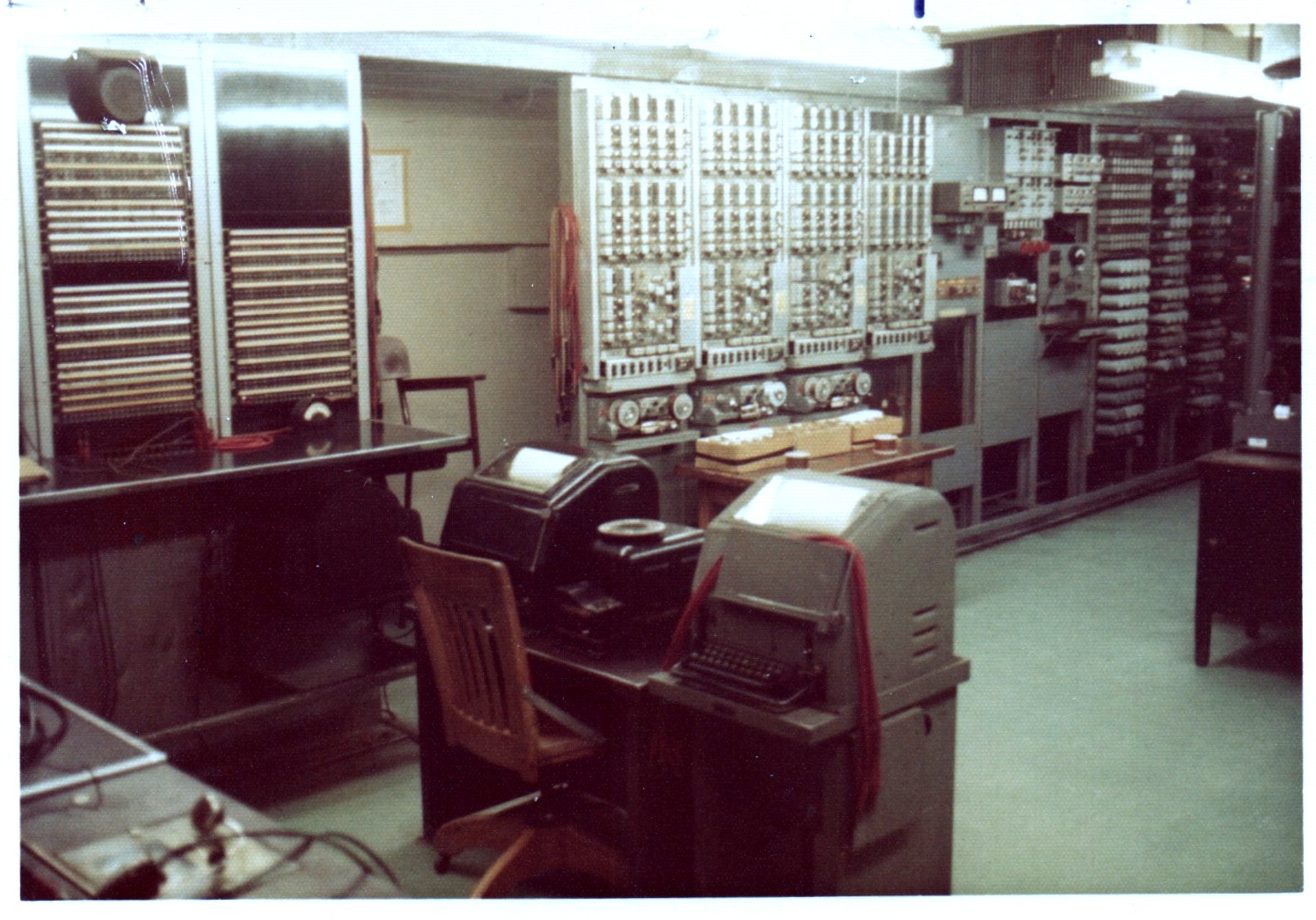
This is a view of the "new" test board in the catacombs of the rebuilt Penn Station. This view dates from about 1975. 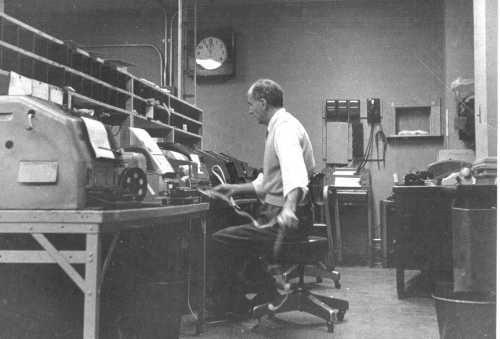
Telegrapher John Witkoski at the teletype. This office was located just across
the hall from the dispatcher's office or "Movement Bureau"
(official name) on the fourth floor of the original Pennsylvania Station,
New York. There were windows on the wall (behind John) which overlooked
the main waiting room. One person who worked there relates that "On slow
nights we used to throw water ballons from
these windows at the bums sleeping on the benches below."
This picture was taken about 1962.
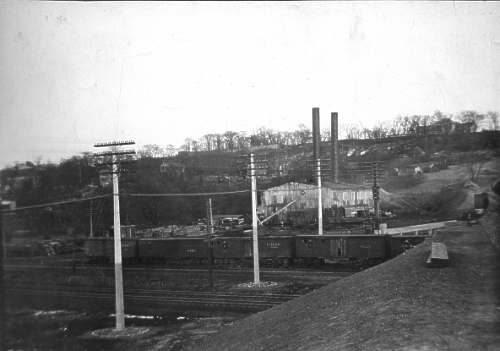
This is an early photograph of the concrete pole line terminating at the Sub 3 test house near the portal of the North River Tunnels. These concrete poles lasted into the 1980's although the open line wire had been replaced with cable, most likely during the electrification in the 1930's. Numerous brush fires in the meadows brought about an early end to the cable requiring a temporary cable to be laid on the fill along two track. Eventually, fiber optic and signal cables were hung on messenger attached to the catenary poles. Most of the poles have since been cut down although a few still stand. The lattice steel pole at the end is still there as is the test house. Photograph from the collection of Paul Wills |
